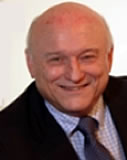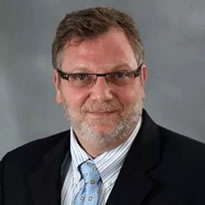How do you determine what care and how much money a chronically or catastrophically disabled individual will need for the rest of his or her life?
Some attorneys representing either the plaintiff or the defendant in such cases are now getting the expert help they need from specially trained rehabilitation consultants called "life care planners".
Life care planners do exactly what the name implies: they formulate life care plans - detailed descriptions of special damages the disabled individual suffered, what progressive disablement can be anticipated and, most importantly, the present and future monetary costs of all necessary care.
In doing this, the life care planner deals in actual dollar figures, not "guesstimates". This allows the jury to understand what the disabled person needs, currently and in the future, and why.
As a result, the specialized training of a life care planner can simplify the plaintiff attorney's job, strengthen the case and make the settlement more realistic in terms of future needs.
For the defense attorney, the life care planner can point out case weaknesses, exaggerations and unnecessary costs.
Emerging Expertise
Life care planning is an emerging expertise that evolved because of a need.
In the past, attorneys working on a case involving lifetime disablement often consulted underwriters. But underwriters based their opinions on what they considered similar or typical past cases. Consequently, the needs of a specific case were often ignored, as were the probable effects of the aging process.
Armed with only the underwriter's opinion, the attorney often would assume that the health-related needs of the disabled, such as medication, orthopedic equipment and treatment, had stabilized and would not change in the years to come. So strategic financial needs of the future often sneaked by unrecognized.
Admittedly, it is often difficult to foresee future needs.
Consider the case of Robert L., a healthy young man seriously injured in a swimming accident. The accident severely impaired Robert's mobility - he could not return to his job. But Robert could be and was retrained for other work. Meanwhile, he initiated a lawsuit and received a settlement that both Robert and his lawyer thought would see him through life.
Unfortunately, that was not to be. As Robert aged, his needs changed. He eventually became totally immobile. This necessitated constant care. But Robert's settlement failed to provide money for such care.
Academic Program
To help prevent poorly planned settlements such as Robert's, the University of Florida and the Rehabilitation Training Institute have initiated an academic program specifically designed for rehabilitation consultants to enhance their expertise to include life care planning.
The program involves 160 classroom hours of post-graduate course study and trains life care planners to look for future, as well as present, care needs. Specific areas of study include spinal cord injuries, head injuries, amputees, pediatric brain injuries, forensic rehabilitation applications, catastrophic case management, vocational assessment, wage loss and multiple disabilities.
The training stresses that, to be most useful and valuable, life care planners must take a holistic and objective approach in making their analyses. It is vital that the life care planner knows how to look at every aspect of the disabled person's life, rather than just looking at an isolated problem.
For example, one component of a life care plan is a work capacity assessment. The assessment is important because it determines employability and becomes a foundation for the vocational assessment.
These assessments make it possible for the jury to see what transferable skills the disabled person has and what jobs, if any, he or she could perform presently and in the future. The assessments also indicate why the disabled person could not handle specific tasks at a competitive or sustained rate. Such evaluations require specific training and certification. Ideally, a rehabilitation consultant performing these evaluations will have training and be certified by the National Association of Disability Evaluating Professionals.
Because the main goal of a life care plan is obtaining optimized care and quality of life in a cost-effective manner, the rehabilitation consultant must communicate with others - clinical treatment teams, community resource people and family members. Through this communication, the rehabilitation consultant organizes an interdisciplinary team of experts. In turn, they provide the process that determines the best estimate of projected services and products for the most effective management of a specific case.
For example, cost projections are based on pricing accurate to the geographic region in which the patient will receive the service. It is vital that the disabled individual's holistic care and/or quality of life not to be compromised to save dollars. Therefore, cost projections should not be stated as possibilities, but as probabilities. Nor should projections automatically recommend the most expensive equipment when hired by the plaintiff or the least expensive when hired by the defense. Finally, projections should never make probability predictions contrary to accepted fact and literature; they should not neglect to take advantage of free or discounted services a client may be entitled to; they should not discount the desires and goals of the client.
The effective life care plan is like a blueprint that facilitates the rationing of resources, prioritizes the use of those resources and develops a long-term strategy.
Not All The Same
The life care planner uses specific software tools and a copyrighted format to analyze and outline the needs of the impaired.
But life care plans are not all the same; they are geared to the needs of the individual.
Therefore, a life care plan may include any or all of the following:
- projected evaluations;
- projected therapeutic modalities;
- aids for independent functioning;
- educational needs;
- occupational needs;
- recreational needs;
- drug and supply needs;
- architectural modifications;
- home care or residential care;
- attendant requirements;
- mobility requirements (e.g., wheelchairs);
- transportation needs;
- assistive technology, and
- psychiatric needs.
In other words, based on current medical knowledge, the rehabilitation consultant strives to itemize everything the disabled person might need during his or her lifetime and to make the plan specific so the individual's needs are met.
Cost is established using a two-step process.
In the first step, a monetary sum that will compensate for actual loss and encompass all foreseeable expenses is determined in current dollars.
In the second step, a rehabilitation consultant qualified in economic damages evaluation determines present and future values of damages. To do this, cost is given in current dollars. Through this process, future cost increases can be more easily seen, understood and met.
For the attorney representing a plaintiff, a life care plan strengthens the argument for a truly realistic settlement sum. A rehabilitation consultant with specialized skills and training, accredited in life care planning, can testify in court as an expert or work as a consultant and assist the attorney in formulating his or her argument.
A life care planner can be of similar value to the defense. In such cases, the life care planner can advise the attorney on records to request and reports to use. The life care planner can also provide expert advice and testimony disputing the need for requested items or services and unnecessarily high settlements.
Given the current tendency of some courts to put a cap on settlements, attorneys will probably find the expertise of a life care planner increasingly beneficial.











